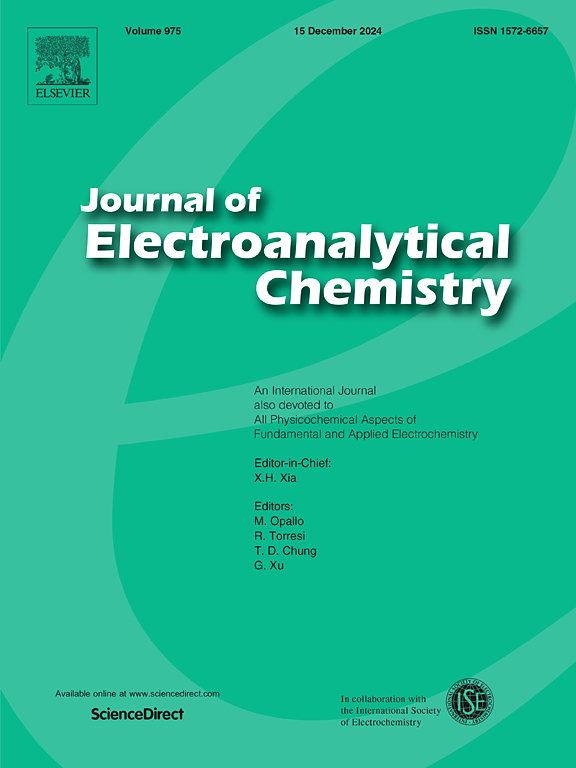Preparation of mesoporous hard carbon anode materials by nitrogen doping of biomass to enhance the specific capacity of sodium ion adsorption
IF 4.1
3区 化学
Q1 CHEMISTRY, ANALYTICAL
引用次数: 0
Abstract
This study synthesized a hard carbon anode material (HC-N1300) with hierarchical micro/mesoporous structure through biomass-derived nitrogen doping, aiming to explore its application in sodium-ion batteries (SIB). Structural characterization reveals that HC-N1300 possesses well-developed micro/mesopores, which significantly shorten the diffusion pathways for sodium ions (Na+). Compositional analysis further demonstrates an increased ratio of pyridinic-N to pyrrolic-N configurations, providing abundant electrochemically active sites. These synergistic structural and compositional advantages collectively enhance the adsorption capability in the slope region. In half-cell evaluations, the HC-N1300 delivered an initial discharge capacity of 486 mAh g−1 at 0.1 A g−1 with a reversible capacity of 330 mAh g−1. Remarkably, it maintained 88.5 % capacity retention after 1000 cycles at 0.5 A g−1. Mechanistic analysis revealed that nitrogen doping plays a crucial role in pore formation during carbonization. The hierarchical porous architecture not only increases active sites but also facilitates rapid Na+ diffusion, thereby effectively improving both plateau capacity and rate capability. This work provides valuable insights for designing high-performance anode materials for SIB.
生物质氮掺杂制备中孔硬碳负极材料,提高钠离子吸附比容量
本研究通过生物质源氮掺杂合成了具有层次微/介孔结构的硬碳负极材料HC-N1300,旨在探索其在钠离子电池(SIB)中的应用。结构表征表明,HC-N1300具有发育良好的微/中孔,显著缩短了钠离子(Na+)的扩散途径。成分分析进一步表明,吡啶- n与吡咯- n构型的比例增加,提供了丰富的电化学活性位点。这些协同的结构和组成优势共同增强了斜坡区的吸附能力。在半电池评估中,HC-N1300在0.1 A g−1下的初始放电容量为486 mAh g−1,可逆容量为330 mAh g−1。值得注意的是,在0.5 A g−1下循环1000次后,其容量保持率为88.5%。机理分析表明,氮掺杂对碳化过程中孔隙的形成起着至关重要的作用。分层多孔结构不仅增加了活性位点,而且促进了Na+的快速扩散,从而有效地提高了平台容量和速率能力。这项工作为设计高性能SIB负极材料提供了有价值的见解。
本文章由计算机程序翻译,如有差异,请以英文原文为准。
求助全文
约1分钟内获得全文
求助全文
来源期刊
CiteScore
7.80
自引率
6.70%
发文量
912
审稿时长
2.4 months
期刊介绍:
The Journal of Electroanalytical Chemistry is the foremost international journal devoted to the interdisciplinary subject of electrochemistry in all its aspects, theoretical as well as applied.
Electrochemistry is a wide ranging area that is in a state of continuous evolution. Rather than compiling a long list of topics covered by the Journal, the editors would like to draw particular attention to the key issues of novelty, topicality and quality. Papers should present new and interesting electrochemical science in a way that is accessible to the reader. The presentation and discussion should be at a level that is consistent with the international status of the Journal. Reports describing the application of well-established techniques to problems that are essentially technical will not be accepted. Similarly, papers that report observations but fail to provide adequate interpretation will be rejected by the Editors. Papers dealing with technical electrochemistry should be submitted to other specialist journals unless the authors can show that their work provides substantially new insights into electrochemical processes.

 求助内容:
求助内容: 应助结果提醒方式:
应助结果提醒方式:


